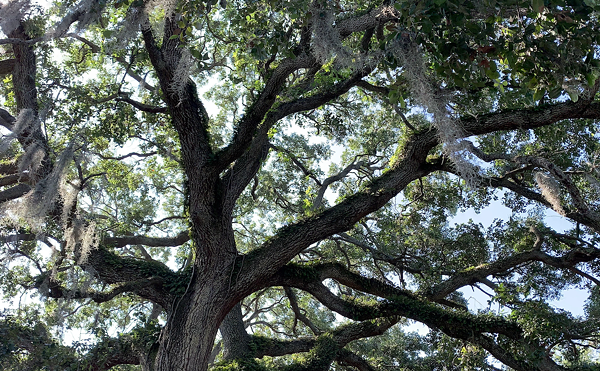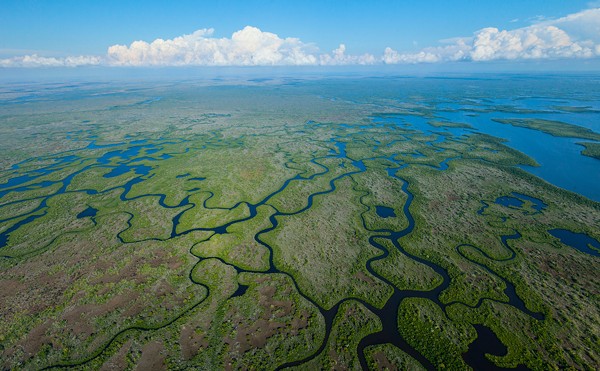More recently, researchers from the United States Geological Survey (USGS) fitted several Alaskan polar bears with tracking collars to find out the extent of their travels and document how much trouble they are having hunting in a warmer Arctic. One of the bears, a mother with a yearling cub on her back, made what researchers are calling an “epic journey in search of food” during September-October 2008. “This bear swam continuously for 232 hours and 687 km and through waters that were 2-6 degrees C,” reports USGS research zoologist George M. Durner. “We are in awe that an animal that spends most of its time on the surface of sea ice could swim constantly for so long in water so cold." During the rest of the two-month tracking period, the bear intermittently swam and walked on ice floes for another 1,200 miles.
But while the mama bear survived the ordeal, she lost 22 percent of her body fat during a crucial time of year for fattening up before a long winter’s hibernation. And her cub was not so fortunate. “It was simply more energetically costly for the yearling than the adult to make this long distance swim,” said Durner, whose findings were published in the January 2011 edition of Polar Biology. The case of this one polar bear and the failure of her offspring to survive in the new environmental conditions of the Arctic doesn’t bode well for the future of the species, especially as Arctic sea ice continues to retreat at a record pace.
The International Union for the Conservation of Nature (IUCN), which maintains the international “Red List” of threatened species, considers the polar bear “vulnerable” due to climate change-induced retreating sea ice. For its part, the U.S. government listed polar bears as “threatened” in 2008 under the Endangered Species Act. The IUCN website also points out that, while the polar bear has come to symbolize the impact of global warming on wildlife, many other species are similarly affected, including the ringed seal and well-known species like the beluga whale, arctic fox, koala and emperor penguin.
Some argue that, since it is illegal to engage in activities that could harm or kill threatened or endangered species, Americans should be forced to cut their greenhouse gas emissions to preserve polar bear habitat. While such a notion hasn’t forced many of us to voluntarily drive fewer miles or turn down our heat, it might be just what it will take the world’s largest land carnivore from going the way of the dodo.
EarthTalk® is written and edited by Roddy Scheer and Doug Moss and is a registered trademark of E — The Environmental Magazine (www.emagazine.com). Send questions to: [email protected]. Subscribe: www.emagazine.com/subscribe; Free Trial Issue: www.emagazine.com/trial.
Image: Jupiter Images/Getty
















